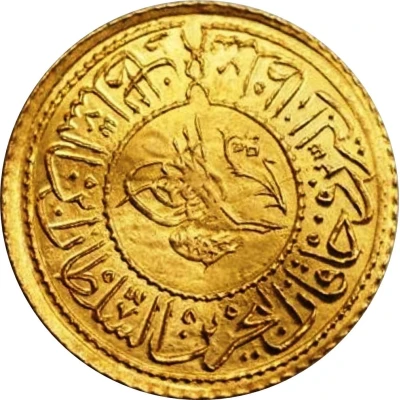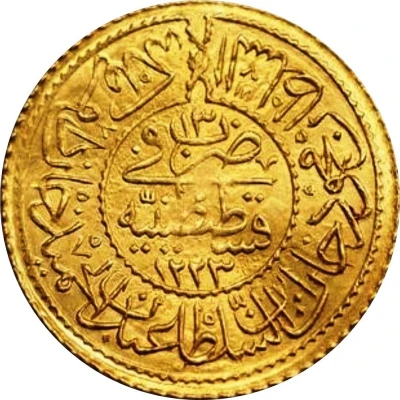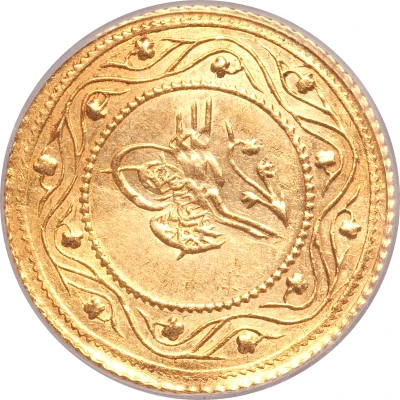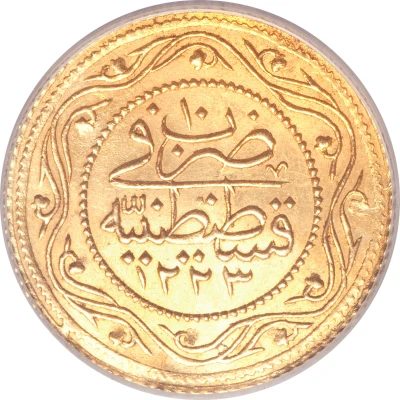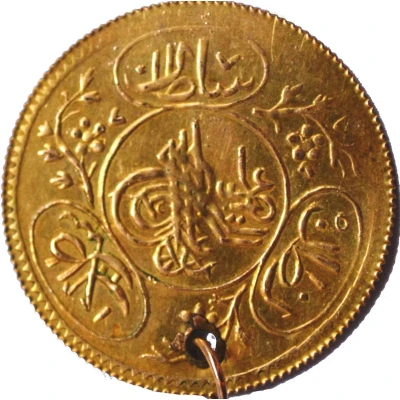
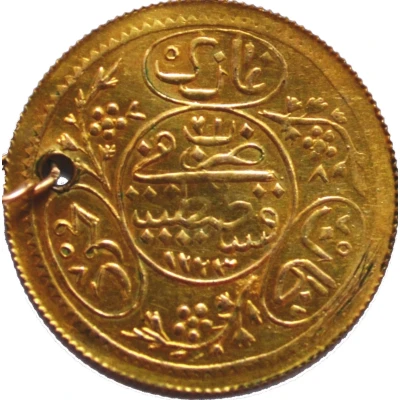

© darius
2 Hayriye - Mahmud II ND
1828 year| Gold (.873) | 3.5 g | 28 mm |
| Issuer | Ottoman Empire |
|---|---|
| Sultan | Mahmud II (1808-1839) |
| Type | Standard circulation coin |
| Year | 1828 |
| Value | 2 Hayriye (48) |
| Currency | Kuruş (1688-1844) |
| Composition | Gold (.873) |
| Weight | 3.5 g |
| Diameter | 28 mm |
| Shape | Round |
| Orientation | Coin alignment ↑↓ |
| Demonetized | Yes |
| Updated | 2024-10-06 |
| Numista | N#79931 |
|---|---|
| Rarity index | 83% |
Reverse
Regnal year, mint and date within center circle of flowers and ovals
Script: Arabic
Lettering:
غازى | محمود | خان
٢١
ضرب
في
قسطنطينية
١٢٢٣
Translation:
Ghazi | Mahmud | Khan
21. Duriba fi Konstantiniyye. 1223.
Ghazi | Mahmud | Khan
Struck [during the] 21[st year of the sultan rule] at Constantinople. [Accession in] 1223 [AH].
Interesting fact
One interesting fact about the 2 Hayriye - Mahmud II ND (1828) coin from the Ottoman Empire is that it was issued during a time of significant economic and political change in the empire. The coin was introduced as part of a broader effort to reform the Ottoman economy and currency system, which had been facing challenges due to inflation, debasement of the currency, and a growing national debt. The introduction of the 2 Hayriye coin, which was made of gold and had a relatively high value, was intended to help stabilize the currency and promote economic growth. Despite these efforts, the Ottoman Empire continued to face economic challenges, and the coin's value fluctuated over time due to a variety of factors, including political instability and the decline of the empire's power. Today, the 2 Hayriye - Mahmud II ND (1828) coin is a rare and valuable collector's item, and its history provides a fascinating glimpse into the economic and political developments of the Ottoman Empire during the 19th century.
